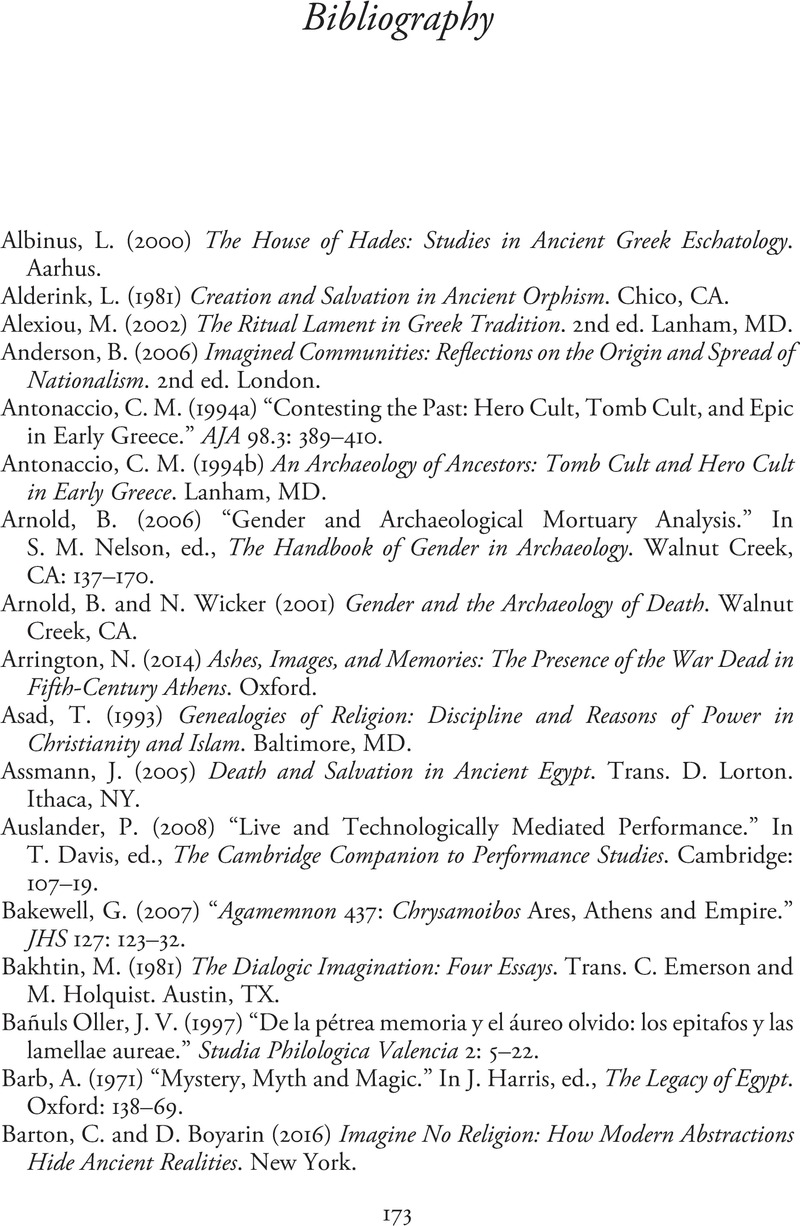Book contents
- The Bacchic Gold Tablets and Poetic Tradition
- The Bacchic Gold Tablets and Poetic Tradition
- Copyright page
- Dedication
- Contents
- Figures
- Acknowledgments
- Abbreviations
- Introduction Bacchic Verses
- Chapter 1 Mapping Memory
- Chapter 2 The Tomb of Memory
- Chapter 3 Material Genres
- Chapter 4 Gold in the Grave
- Epilogue
- Bibliography
- Index Locorum
- General Index
- References
Bibliography
Published online by Cambridge University Press: 11 May 2023
- The Bacchic Gold Tablets and Poetic Tradition
- The Bacchic Gold Tablets and Poetic Tradition
- Copyright page
- Dedication
- Contents
- Figures
- Acknowledgments
- Abbreviations
- Introduction Bacchic Verses
- Chapter 1 Mapping Memory
- Chapter 2 The Tomb of Memory
- Chapter 3 Material Genres
- Chapter 4 Gold in the Grave
- Epilogue
- Bibliography
- Index Locorum
- General Index
- References
Summary

- Type
- Chapter
- Information
- The Bacchic Gold Tablets and Poetic TraditionMemory and Performance, pp. 173 - 201Publisher: Cambridge University PressPrint publication year: 2023



